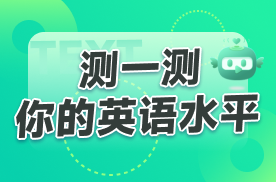新东方网>英语>英语学习>英语听力>听力视频>演讲视频>正文
TED演讲:如何1年学完麻省理工学院4年课程
2016-12-01 11:46
来源:沪江
作者:
Yeah, sure that if I had a question I could rise my hand, but if I really didn’t understand something it was up to me to learn it.
的确,如果我有问题要问可以直接举手,但如果我有什么不懂的,最终只能自己学着去解决。
So perhaps the doubts and worries over do-it-yourself degree, had more to do with it being unconventional, than it being genuinely more difficult than a formal program.
所以,对于自助学位的疑虑,可能更多地来自于它的不同寻常,而非它比正统求学难。
And as I started doing the first few classes, my results were even more surprising than that.
而当我开始学前几门课程的时候,我得到的结果甚至比这个还要惊人。
I found I was able to learn faster using this approach than I ever had while in university.
我发现用这种方法学习的速度比我以前在大学里学习的速度要快多了。
So far from being an obstacle, it turned out that not going to MIT had made my job a lot easier.
目前看来,这并不是一个障碍,事实证明不去MIT反而让我的学习工作容易了不少。
Okay, so that last bit deserves a little bit of an explanation. After all, an MIT student has access to everything I do, and much much more.
不过,最后这一点我得多做点解释。毕竟,我拥有的资源,MIT的学生都有,而他们还拥有很多我没有的。
How can I possibly have an advantage over a student when I have fewer resources? It defies common sense.
当我的资源少于一个MIT学生的时候,我怎么可能比TA有优势呢?这很违反常识。
So in order to explain this, I need to do a little bit of a detour. I need to go into the geeky realm of personal productivity. So there is a tool called the TimeLog.
想要解释这一点,我得绕点弯子,我得讲点个人生产力方面的艰深内容。而我要讲的是一种工具,它叫时间日志。
And here is how the TimeLog works. You jot down the starting and the stopping times for every activity you do. And I mean every activity, from when you wake up in the morning, to when you take out the garbage.
时间日志是这样用的:你记下你做每件事的起始时间和完成时间。我说的是所有的事,包括你早上几时起床,以及你什么时候出去倒垃圾。
Now my guess is that most of you here have never done a TimeLog before. You can just imagine how irritating that is to do.
我猜你们中的大部分人以前都没有用过时间日志,你们可以想象得出这个有多么烦人。
But if you do one, the results can be eye-opening.
但只要你用过一次,它的结果会让你觉得发现了新世界。
So here’s a recent Wall Street Journal article where the reporter did just that.
《华尔街日报》最近有篇文章,写这篇文章的记者就干了这个。
She writes: “I soon realized I’d been lying to myself about where the time was going. What I thought was a 60-hour workweek wasn’t even close. I would have guessed I spent hours doing dishes when in fact I spent minutes. I spent long stretches of time lost on the Internet or puttering around the house, unsure exactly what I was doing.”
她是这样写的:“我很快意识到,对于‘我的时间都用在什么地方了’这一问题,我一直都在骗自己。我曾以为自己一周工作60小时,其实远没有那么多。我本以为我花在洗盘子上的时间有几小时,而实际上只有几分钟。在很大一部分时间里,我都是在网上闲逛或在家里瞎转悠,并不知道到底要干什么。”
Now, because I am a huge geek I’ve done TimeLogs before and I can say the situation is even worse for students.
而由于我是个资深极客,我以前也用过时间日志,我可以告诉你们,学生人群的情况要糟糕得多。
The vast majority of time students spend, isn’t spent learning, it’s spent commuting to class, copying notes at Starbucks, and trying to stay awake in lectures.
学生所花的绝大部分时间都没有用在学习上,而是用在了去上课的路上、在星巴克抄笔记、或者是在讲座上尽力不睡着。
If you could total up the amount of time that students spend forming new insights, and remembering facts which is of course what learning is, it would be tiny.
如果你能把学生用在“形成新见解”和“记住新要点”上的时间加总,换句话说就是用在学习上的时间,你会发现它其实很少。
And for the most part, this is not even the student’s fault. After all, entrepreneurs often notice a startling difference in their productivity, at a start-up versus a big firm.
而这很大程度上并不是学生的错。毕竟,企业家们也常常发现自己在刚创业时和公司做大时的产出率完全不一样。
Big institutions mean bureaucracy. They mean paper work, they mean doing what you’re told instead of what’s important.
大机构意味着官僚主义。它们意味着更多的纸面流程,意味着你得做上级告诉你的事而不是真正重要的事。
So being an educational entrepreneur can therefore offer some learning advantages over people in a formal system. So, take lectures as a perfect example.
所以,像我这样把自我教育当创业来做的人,比那些在正规系统里学习的人更有学习优势。比如讲座就是个完美的例子。
So, when I would do MIT lectures, when I started doing the classes, I would watch them at one and a half times the speed.
当我要听一场MIT讲座或者一门课的时候,我会用1.5倍速来听。
Now this may sound very difficult, but the difference is barely audible in human speech, and of course, if it goes too fast, you just hit rewind.
这听起来可能很难,不过其中的区别基本听不出来,而且,如果真的太快了,你完全可以倒回去重听。
Students in a regular classroom don’t have access to a fast-forward or rewind button, even though I’m guessing most of them would like one.
教室里的学生并没有快进键和倒带键可以用,然而我觉得他们其实都想要一套。
And the impact of this isn’t trivial. By being able to watch lectures at a slightly faster pace, and watching them sequentially, I was able to take classes that normally span four months, and watch them in two days of real time.
这点不同带来的后果可不小。由于可以用稍微快一点的速度播放这些讲座,并且可以连着把它们看完,我可以把正常情况下4个月的课程压到2天内看完。
Or take assignments. Students do assignments because they have to. Yes, sometimes they facilitate learning, but sometimes they don’t.
还有作业。学生们做作业是因为有人要求他们这么做。对,有的时候这对学习有帮助,但有的时候并没有。
For example, if you are struggling with a concept why wait weeks to get your answers back?
比如,如果你正在为某个概念纠结,为什么非得等好几周才得到反馈呢?
When I would do a hard MIT assignment, I would do the questions with the solution key in hand, one question at a time, because it’s tight feedback loops like this that cognitive scientists recognize as being critical to learning.
当我需要做一份很难的MIT作业时,我手里同时也拿着答案,每次只做一个题,因为认知科学家们认为这样的及时反馈对学习来说至关重要。
And you don’t need to be a genius to apply these ideas either.
而且,并不是只有天才才能运用这些点子。
Being able to replay key segments of lectures; being able to get immediate feedback on your skills; these are structural advantages that benefit slow learners as much as they benefit fast ones.
能够回放讲座中的关键部分、能够立即得到关于技能的反馈,这些结构性的优势对慢学生和快学生来说都很有益。







